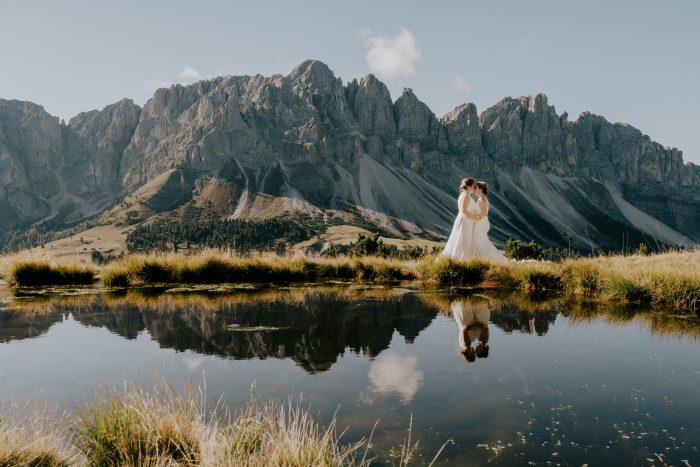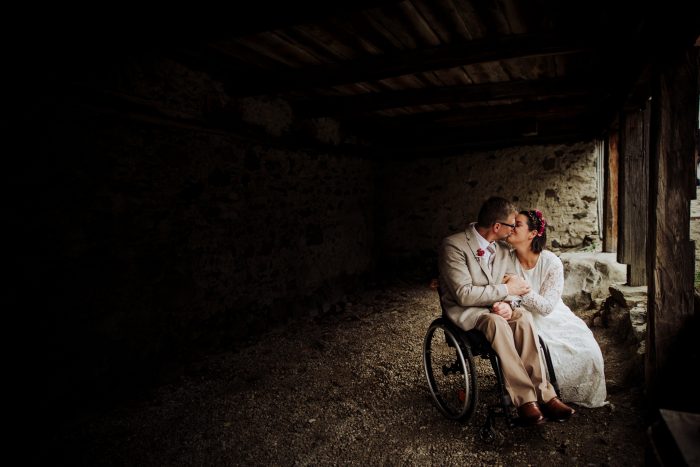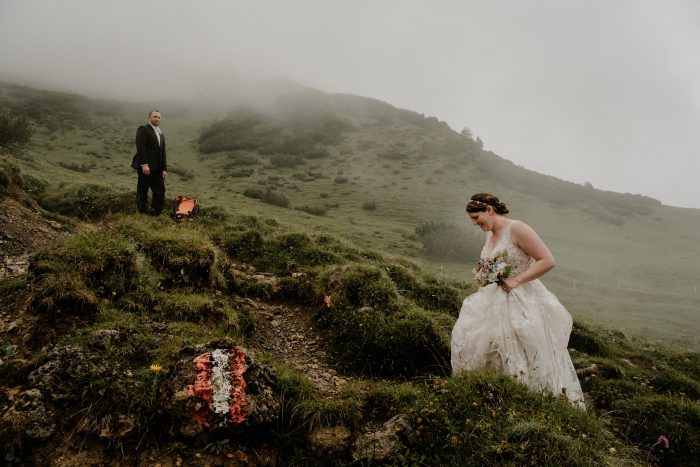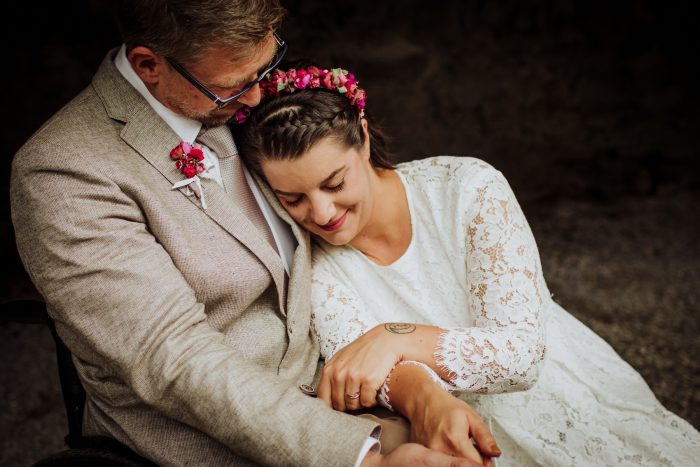Sustainability has become a popular topic in the photography industry as of late. But there’s still a long way to go to make the world of weddings and wedding photography more sustainable. Many photographers are doing a great job at improving sustainability awareness with their clients, such as sharing sustainable wedding planning choices. But when it comes to their own businesses, how can photographers really “walk the walk” and “talk the talk”?
In this post, I cover both easy and challenging changes you can implement to make your wedding photography business more sustainable.
Ways To Become a Sustainable Wedding Photographer
1. Leave No Trace & Beyond
Many photographers are aware of Leave No Trace and why it’s important, which is a great starting place. But there are more things you can do to help promote environmental sustainability, such as:
- Encourage clients to skip locations that are suffering from over-tourism
- Recommend visiting busy locations in the off-season
- Promote and refer other local vendors who follow LNT and sustainable practices
2. Profit Over Portfolio
It’s common for photographers to offer discounts or free shoots to build up their portfolio, especially in highly sought-after destinations. But offering discounts doesn’t only harm the local market, you also risk devaluing your business.
Whether it’s shooting at home or a destination wedding, make sure you are pricing your services profitably. This allows you to not only provide yourself (and your family) with a healthy income, but you can then reinvest portions of those profits back into your business. Consider investing in marketing, outsourcing, or personal development, all of which promote long-term sustainability in business.
3. Support Diversity & Inclusion
Diversity and inclusion go hand in hand with sustainability. But we shouldn’t just throw a few diverse models into our portfolio and call it a day. Tokenism is so last season and authenticity is the real winner!
To support diversity and inclusion with integrity we need to put in the work. This means educating ourselves about different cultures and cultural experiences as well as actively seeking out diverse models and subjects to represent the beauty of diversity authentically.
How can we do this? Well, for starters, we can pay the models we work with for styled shoots. This not only shows respect for their work and contributions but also ensures that we’re not just using their identities or cultures for our benefit. We can also reach out to diverse communities and collaborate with other creatives who share our commitment to diversity and inclusion.
We can also update our branding and websites to be more inclusive. Try to avoid using gendered language like “bride and groom” and use gender-neutral terms like “partner” or “couple” instead. You can also ask for pronouns on your inquiry forms. This not only shows respect for all gender identities but demonstrates our commitment to creating an inclusive environment.
4. Resist Buying New Equipment
The amount of gear you are told you need to buy can be overwhelming, especially as a new photographer. And it doesn’t stop once you’ve filled your gear bag. Companies are constantly releasing new models and developing newer technology. Upgrading to the latest and “best” models is tempting, whether that’s the newest camera body or the latest iPhone.
But we all know that the gear doesn’t make the photographer. Yes, we need professional equipment to do our jobs and it should be in good working condition. But next time you are considering an upgrade ask yourself, “Do I really need it?”
If the answer is yes–because sometimes it’s unavoidable–try to buy used or refurbished equipment or make your purchase from a small, local business rather than a big tech retailer.
5. Work Legally
Whether at home or overseas, make sure to check the location’s work requirements. If you’re working on public lands–such as national parks or even in some popular tourist destinations–you may be required to apply for a photography permit.
And when working overseas, don’t assume a tourist visa will suffice. While many people do this, if you value sustainability and ethical business practices, you’ll want to make sure everything is done correctly. You may be required to apply for a work permit, a business visa, or to register with the local government. The easiest way to check is to reach out to your local embassy or consulate or to contact immigration for the location you are visiting.
6. Go Digital
Many photographers have already done this, but going fully digital is a great way to reduce waste and improve efficiency. Try out digital communication workflows, like using a CRM to send contracts and invoices.
You could even consider removing physical products from your packages (and only offering them as an upsell through your image gallery.) Lots of photographers include things like albums or prints in their packages to up the package value. But don’t assume all clients want these additions. It may be difficult for some photographers to let go of, but the production, packaging, and shipping of these printed products can have a significant environmental impact.
For those who aren’t ready to stop offering albums or prints just yet, consider switching to suppliers that have sustainable production, packaging, and will ship directly to your client.
7. Optimize Your Website
Take the “less is more” approach to images on your website, and carefully curate how many images you are showing. Use WebP and compressed images and avoid GIFS and videos set to autoplay.
You can also look at your hosting provider to see if they are committed to sustainability and use renewable energy (because data storage has a huge carbon footprint). Check your website on the Website Carbon calculator to discover more ways to optimize your website.
8. Email Detox
Did you know that your emails have a carbon footprint? A single email emits around 4 grams of CO2 on average, and global email traffic is estimated to produce around 300 million tons of CO2 emissions annually according to the BBC. While unsubscribing from email lists and sending fewer emails may not have a huge impact, collectively, these small actions can help reduce the overall carbon footprint of email.
Additional ways to reduce email-related carbon emissions include compressing file attachments, using text-only emails, and deleting old emails. Any time data is transferred, stored, or loaded, energy is used. And the more data stored–such as in old emails–the more energy is required.
9. Donate To A Cause
An easy way to support causes you care about is to donate money to an affiliated charity (which may also have some tax benefits to your business.) But if you aren’t in a financial position to donate money, you can volunteer your time instead. Some options are teaching a class for a local community group or volunteering your time to photograph for a local charity.
10. Reduce Your Travel
Reducing or adjusting your travel can have a huge impact on sustainability. Here are ways you can be a more sustainable traveler:
- Limit the number of destination bookings you accept per year
- Take multiple bookings in one area and stay for an extended period of time
- Fly direct and avoid flights with multiple layovers
- Use public transport when possible
- Carpool with other vendors
- Rent electric or hybrid vehicles instead of a gas-powered
There are many actions you can take to minimize your carbon footprint and create a more sustainable photography business. Whether you practice Leave No Trace, support diversity and inclusion in your portfolio, or reduce your travel, you don’t have to sacrifice your business goals to be environmentally and socially conscious.
When sustainable practices are embraced, you may begin to notice that not only are you helping the planet but you attract more clients who share your vision for a more sustainable future.
Author Bio
Cat Ekkelboom-White is a leading elopement photographer in Europe specializing in adventure elopements in the Austrian Alps & Dolomites. In 2022, she stopped shooting destination weddings across Europe and took action to make her business more sustainable. Witnessing the sustainability challenges that arise from destination weddings, she launched the European Elopement Guide in 2023 to help make destination elopements more sustainable by giving local vendors a platform to showcase their value and expertise.
Thoughts On Sustainable Wedding Photographers From Photobug Community
We’d like to thank Cat for writing and sharing this post with us. All of us can be more mindful of resources and how we affect the planet both physically and socially. Thanks for these actionable tips to steer us in the right direction.
To submit your own pitch for an article you’d like to share with our readers, first read our submission guidelines and then pitch your idea here.





